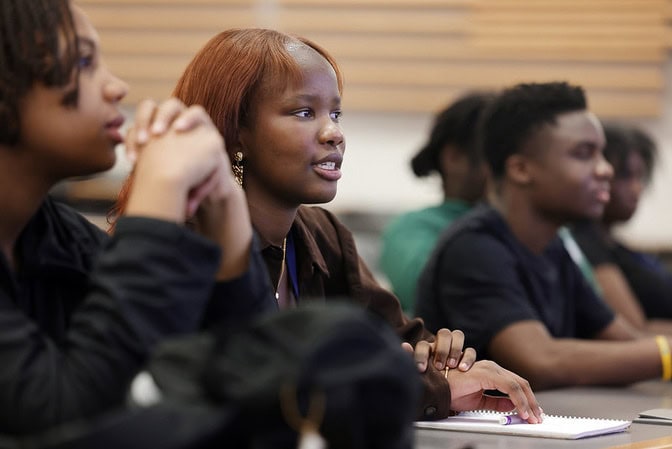
Future nuclear engineers: U-M hosts high school students to explore careers
The four-week residential program prepared rising twelfth graders for nuclear engineering careers through a mix of academic and practical experiences.

The four-week residential program prepared rising twelfth graders for nuclear engineering careers through a mix of academic and practical experiences.
Experts
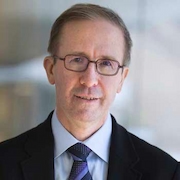
Chihiro Kikuchi Collegiate Professor of Nuclear Engineering and Radiological Sciences and the Glenn F. and Gladys H. Knoll Department Chair
Last month, the University of Michigan hosted rising high school seniors eager to explore the field of nuclear engineering in the Harper Academy 4 Future Nuclear Engineers. The four-week residential program helped students from diverse backgrounds prepare to study nuclear engineering in college and introduced them to career options in the field.
The core curriculum included nuclear engineering fundamentals, math and technical skills, design and community engagement, and college preparatory seminars. Students stayed in Bursley Hall to experience life on a college campus.
Courses also included design thinking exercises to help students develop their creativity. In one example, students facilitated a workshop to engage community members around the design of an energy facility. In another activity, they visited SCRAP, a local creative supply reuse center, where they gathered materials that could be used to develop future nuclear energy devices. Both experiences encouraged them to imagine the long-term community impacts of current and emerging nuclear energy technologies.
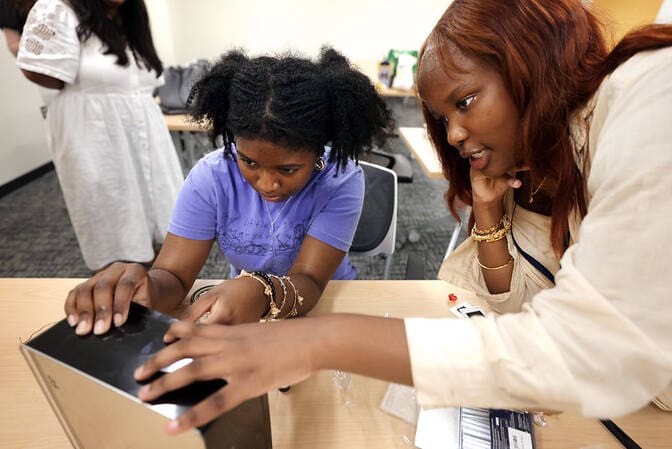
For a behind-the-scenes look at careers in nuclear engineering, students toured many of the labs used by the Department of Nuclear Engineering and Radiological Sciences, as well as the Enrico Fermi Atomic Power Plant Unit 1 in Monroe, Michigan and the Facility for Rare Isotope Beams at Michigan State University in East Lansing.
Guest speakers provided motivational talks and leadership sessions, including E. Royster Harper, former U-M vice president for student life; Ronnie Shepard, a plasma physicist at Lawrence Livermore National Laboratory; and Uhcenna Ezibe, senior manager of STEM programs for the American Nuclear Society.
“The in-person lectures and actually having real professionals in the nuclear industry taking time out of their day to present speeches was just a priceless experience,” said Simon Fadare of Central High School in Maryland. “I couldn’t have asked for anything else.”
Most of the participants had little familiarity with nuclear engineering before starting the program, but felt that they understood it much better after the experience.
“Since I know more about nuclear engineering I feel safer around it,” said Jalen Petty of Heritage High School in Georgia. “It is more important to me knowing now that it can be safer for the environment.”
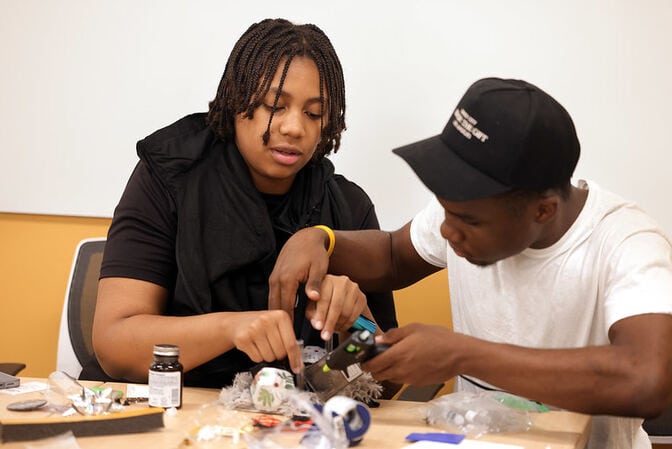
The sentiment was shared by other students in the program.
“It made me realize that it isn’t as dangerous as people claim for it to be, and it’s actually helpful,” said Madison Henley of Romulus High School in Michigan.
The program was made possible through the support of Charles Harper Charities and its founders, Charles L. and Jeffrey Harper. Their mission is to inspire awareness, advancement, and achievement in STEM fields for historically excluded and economically challenged young adults. By creating pathways for future nuclear engineers from underrepresented populations, they aim to contribute to global clean energy goals through an increased nuclear engineering workforce.
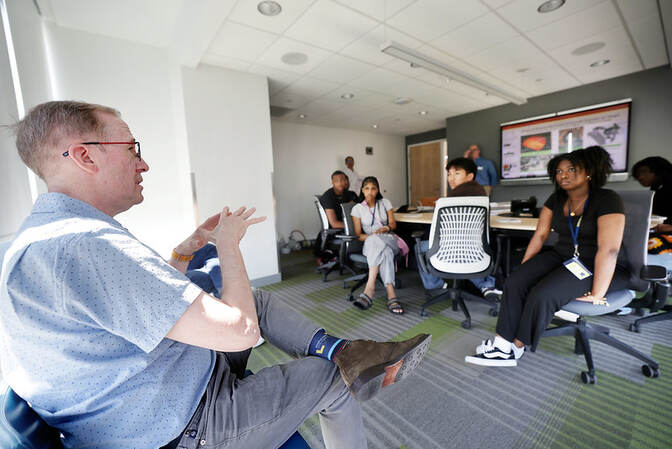
U-M’s Engineering OnRamp, which serves as a pathway for diverse middle and high school students to discover engineering as a profession, also helped support the Harper Academy 4 Future Nuclear Engineers. In partnership with the Department of Nuclear Engineering and Radiological Sciences, they contributed expertise in designing, administering and evaluating the program.
“The Harper Academy 4 Future Nuclear Engineers succeeded in providing an enriching educational experience that went beyond the classroom,” said Todd Allen, the Chihiro Kikuchi Collegiate Professor of Nuclear Engineering and Radiological Sciences and the Glenn F. and Gladys H. Knoll Department Chair. “As these young scholars move forward, and we continue to engage with them, it is my hope that the program’s impact will resonate, contributing to the future of nuclear engineering and clean energy innovation.”
The Harper Academy 4 Future Nuclear Engineers program is set to return next year with an expanded cohort of students.